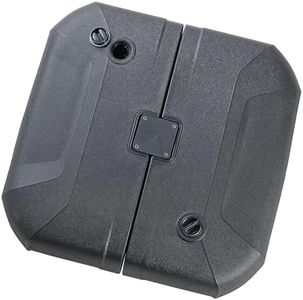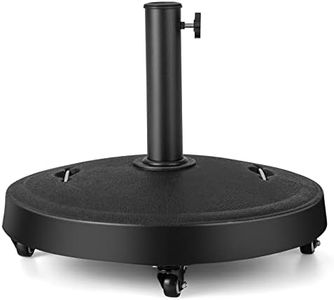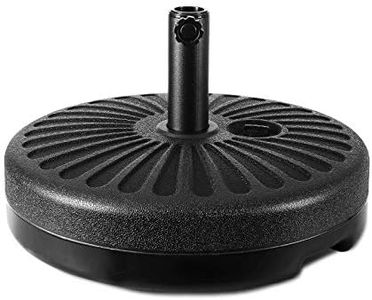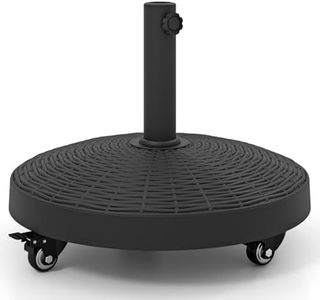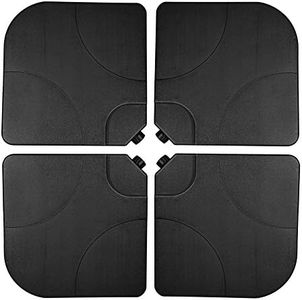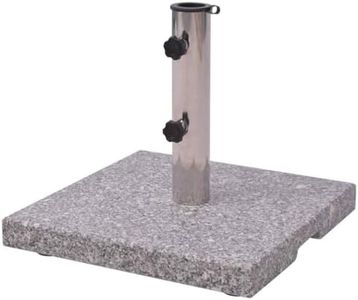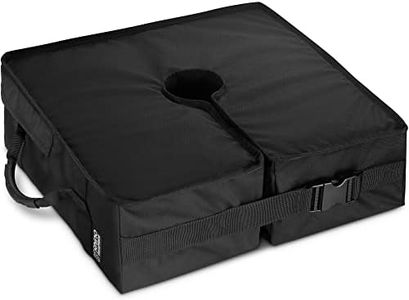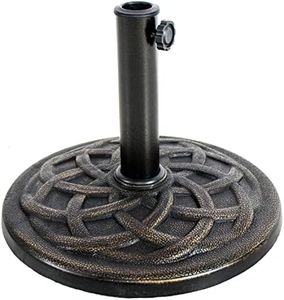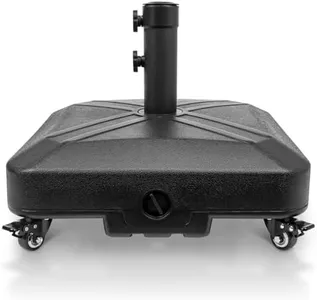We Use CookiesWe use cookies to enhance the security, performance,
functionality and for analytical and promotional activities. By continuing to browse this site you
are agreeing to our privacy policy
10 Best Umbrella Bases
From leading brands and best sellers available on the web.Buying Guide for the Best Umbrella Bases
Choosing the right umbrella base is crucial for ensuring your outdoor umbrella stays safely anchored and stable, especially in windy conditions. When selecting an umbrella base, you want to make sure it's compatible with the size and style of your umbrella, and that it suits the intended location, whether that's on a patio, deck, or grassy area. The right base prevents tipping, makes setup easy, and adds to the safety and convenience of your outdoor space.WeightWeight refers to how heavy the base is, which directly affects how well it holds down your umbrella in wind. Lighter bases (under 30 lbs) are suitable for small umbrellas or spaces protected from wind, while medium-weight bases (30-50 lbs) are more versatile for standard patio umbrellas. Heavy bases (over 50 lbs) are best for large umbrellas or very windy areas. Think about where you’ll place the umbrella and how strong the wind can get there—a heavier base offers more stability but can be harder to move.
Base MaterialThe material of an umbrella base affects durability, appearance, and maintenance. Common materials include concrete (heavy and stable, but not stylish), steel or cast iron (strong, often decorative, but may rust if not coated), and resin or plastic (lightweight when empty, designed to be filled with water or sand for added weight, easy to move and less prone to rust). Pick a material that fits your climate, maintenance preferences, and the look you want for your outdoor space.
Base Shape and SizeShape and size determine how much ground space the base takes up and how stable it will be. Circular and square bases are common; larger bases provide more support but take up more room. If you have limited space, a slim or compact base might be better. Consider the size of your umbrella’s canopy—a bigger canopy usually needs a larger base for stability.
Compatibility with Umbrella Pole DiameterThe base must fit the diameter of your umbrella pole snugly. Bases come with a range of pole diameter compatibility, usually adjustable with tightening knobs or inserts. Check your umbrella pole’s thickness and make sure the base accommodates it, as too loose a fit can make the umbrella unstable and too tight won’t work at all.
Mobility and PortabilitySome bases come with wheels or handles, making them easier to move when needed. If you’ll be moving your umbrella around, or storing it often, a base with these features can save effort and protect your back. Think about how often you might need to reposition the umbrella and if mobility is important for your setup.
Fillable vs. Fixed WeightFillable bases can be emptied and refilled with sand or water, which makes them easier to transport and store when not in use. Fixed-weight bases are solid and always heavy, so they are immediately ready for use and offer consistent stability. If you need flexibility or portability, a fillable base is helpful, otherwise, a solid base offers worry-free stability all the time.
